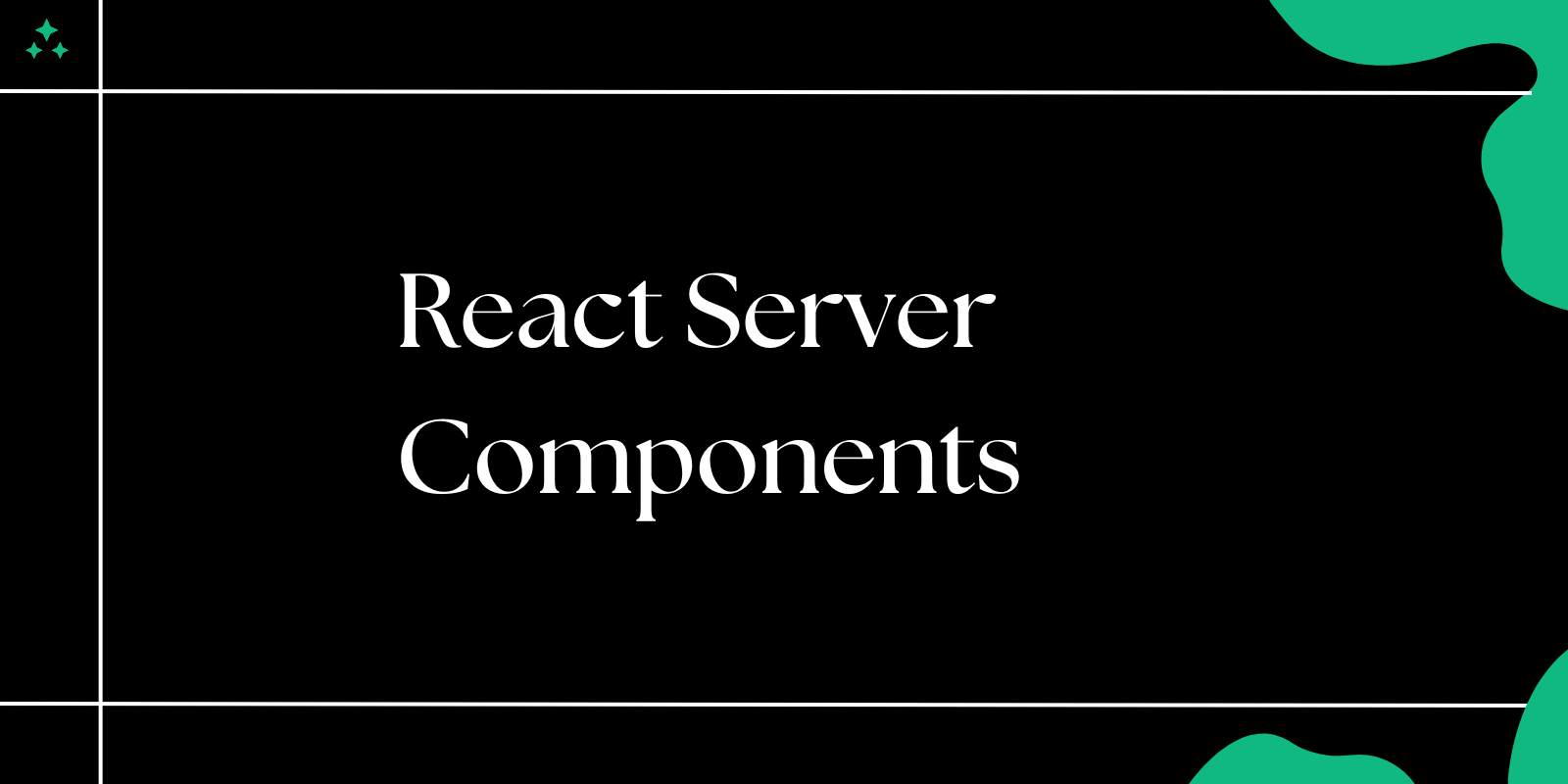Introduction
When React Server Components (RSC) first landed, I'll admit I was skeptical. Another abstraction layer? More complexity? But after working with them in production for several months, I've come to see why the React team believes this is the future of server-side rendering.
Let's explore what makes RSC different, when you should consider using them, and whether they truly represent the evolution of SSR.
What Are React Server Components?
React Server Components are React components that run on the server and never hydrate on the client. Unlike traditional SSR where components render on the server and then "hydrate" in the browser, RSC components stay on the server permanently.
Here's a simple example:
// This is a Server Component
async function UserProfile({ userId }) {
// Direct database access - no API needed
const user = await db.users.findById(userId);
const posts = await db.posts.findByUserId(userId);
return (
<div>
<h1>{user.name}</h1>
<PostsList posts={posts} />
</div>
);
}
The key difference is that this component never runs in the browser. It fetches data, renders JSX, and sends the result to the client as a special serialized format.
How RSC Differs from Traditional SSR
Traditional SSR follows this pattern:
- Server renders HTML
- Client receives HTML and JavaScript bundle
- React hydrates the components on the client
- Components are now interactive
RSC introduces a hybrid approach:
- Server Components render on the server (stay there)
- Client Components hydrate on the client as usual
- Server and Client Components can be composed together
// Server Component (runs on server)
async function BlogPost({ slug }) {
const post = await getPost(slug);
return (
<article>
<h1>{post.title}</h1>
<div>{post.content}</div>
{/* Client Component for interactivity */}
<LikeButton postId={post.id} />
</article>
);
}
// Client Component (runs in browser)
'use client'; // This directive marks it as a Client Component
function LikeButton({ postId }) {
const [liked, setLiked] = useState(false);
return (
<button onClick={() => setLiked(!liked)}>
{liked ? '❤️' : '🤍'} Like
</button>
);
}
The Architecture Behind RSC
RSC works through a streaming protocol between server and client. Instead of sending HTML, the server sends a serialized representation of the component tree that the client can understand and render.
// Simplified representation of what gets sent
{
type: "div",
props: {
children: [
{
type: "h1",
props: { children: "Blog Post Title" }
},
{
type: "LikeButton", // Client Component
props: { postId: 123 }
}
]
}
}
This allows for some powerful capabilities:
Zero Bundle Impact for Server Logic
Since Server Components don't ship to the client, you can import large libraries without affecting your bundle size:
import { PrismaClient } from '@prisma/client';
import { marked } from 'marked';
import hljs from 'highlight.js';
// This component and its dependencies never reach the client
async function MarkdownPost({ slug }) {
const prisma = new PrismaClient();
const post = await prisma.post.findUnique({ where: { slug } });
const html = marked(post.content, {
highlight: (code, lang) => hljs.highlight(code, { language: lang }).value
});
return <div dangerouslySetInnerHTML={{ __html: html }} />;
}
Automatic Code Splitting
Client Components are automatically code-split by default:
// Each of these Client Components becomes its own chunk
function App() {
return (
<div>
<Header /> {/* Client Component */}
<ServerRenderedContent /> {/* Server Component */}
<Footer /> {/* Client Component */}
</div>
);
}
Benefits of React Server Components
1. Better Performance
RSC can significantly improve performance metrics:
| Metric | Traditional SSR | With RSC |
|---|---|---|
| Bundle Size | Includes all server logic | Only client-necessary code |
| Time to Interactive | After full hydration | Immediate for server parts |
| Data Fetching | Client-side waterfalls | Server-side parallel fetching |
2. Simplified Data Fetching
No more complex state management for server data:
// Before RSC (Client Component)
function UserDashboard() {
const [user, setUser] = useState(null);
const [posts, setPosts] = useState([]);
const [loading, setLoading] = useState(true);
useEffect(() => {
async function fetchData() {
const [userData, postsData] = await Promise.all([
fetch('/api/user').then(r => r.json()),
fetch('/api/posts').then(r => r.json())
]);
setUser(userData);
setPosts(postsData);
setLoading(false);
}
fetchData();
}, []);
if (loading) return <div>Loading...</div>;
return (
<div>
<h1>{user.name}</h1>
<PostsList posts={posts} />
</div>
);
}
// With RSC (Server Component)
async function UserDashboard() {
const [user, posts] = await Promise.all([
db.users.findById(userId),
db.posts.findByUserId(userId)
]);
return (
<div>
<h1>{user.name}</h1>
<PostsList posts={posts} />
</div>
);
}
3. Enhanced Security
Server Components can access sensitive data without exposing it to the client:
async function AdminPanel() {
// This API key never reaches the client
const analytics = await fetch('https://api.service.com/data', {
headers: { Authorization: `Bearer ${process.env.SECRET_API_KEY}` }
}).then(r => r.json());
return <AnalyticsChart data={analytics} />;
}
Current Limitations and Trade-offs
1. Ecosystem Maturity
RSC is still relatively new. Not all libraries are compatible:
// This won't work in a Server Component
import { motion } from 'framer-motion';
// Server Components can't use:
// - useState, useEffect, and other client-only hooks
// - Event handlers (onClick, onChange, etc.)
// - Browser-only APIs
2. Mental Model Shift
You need to think differently about component boundaries:
// ❌ This doesn't work
async function ServerComponent() {
const data = await fetchData();
return (
<div onClick={() => console.log('clicked')}>
{data.title}
</div>
);
}
// ✅ Split into Server and Client Components
async function ServerComponent() {
const data = await fetchData();
return <InteractiveWrapper title={data.title} />;
}
'use client';
function InteractiveWrapper({ title }) {
return (
<div onClick={() => console.log('clicked')}>
{title}
</div>
);
}
3. Development Complexity
Debugging can be more challenging since you're dealing with both server and client contexts:
💡 Tip: Use React DevTools Profiler and browser network tabs to understand the server-client boundary.
When to Use RSC
RSC works best for applications with:
- Heavy server-side data requirements: E-commerce, dashboards, content sites
- SEO-critical pages: Marketing pages, blogs, documentation
- Large bundle sizes: When you can move significant logic to the server
// Perfect for RSC: Data-heavy, SEO-important
async function ProductPage({ productId }) {
const [product, reviews, recommendations] = await Promise.all([
fetchProduct(productId),
fetchReviews(productId),
fetchRecommendations(productId)
]);
return (
<div>
<ProductDetails product={product} />
<ReviewsList reviews={reviews} />
<RecommendationsList items={recommendations} />
<AddToCartButton productId={productId} /> {/* Client Component */}
</div>
);
}
RSC might not be ideal for:
- Highly interactive apps: Real-time games, drawing applications
- Simple static sites: Where traditional SSG is sufficient
- Teams new to React: The learning curve can be steep
⚠️ Warning: Don't rush into RSC for existing projects. The migration can be complex, especially for apps with deep client-side state management.
Getting Started with RSC
The easiest way to try RSC is through Next.js 13+ with the App Router:
npx create-next-app@latest my-rsc-app
cd my-rsc-app
Your file structure will look like:
app/
├── page.js # Server Component by default
├── layout.js # Server Component
└── components/
├── ClientButton.js # 'use client' directive
└── ServerData.js # Server Component
📌 Note: All components in the app directory are Server Components by default. Use the 'use client' directive only when you need client-side interactivity.
Is RSC Really the Future?
After working with RSC in production, I believe it represents a significant evolution in how we build React applications. The ability to seamlessly blend server and client rendering while maintaining React's component model is powerful.
However, calling it the definitive "future" might be premature. The ecosystem is still catching up, and the mental model shift is real. Traditional SSR and client-side rendering still have their place.
RSC excels at solving specific problems: bundle size optimization, server-side data access, and improved performance for content-heavy applications. If these align with your needs, RSC could be transformative.
The real power lies in choice. RSC gives us another tool in the toolkit, one that bridges the gap between server and client more elegantly than previous approaches.
As the ecosystem matures and more developers gain experience with RSC, we'll see clearer patterns emerge for when and how to use this technology effectively. For now, it's worth exploring if you're building data-heavy applications where the benefits clearly outweigh the learning curve.



